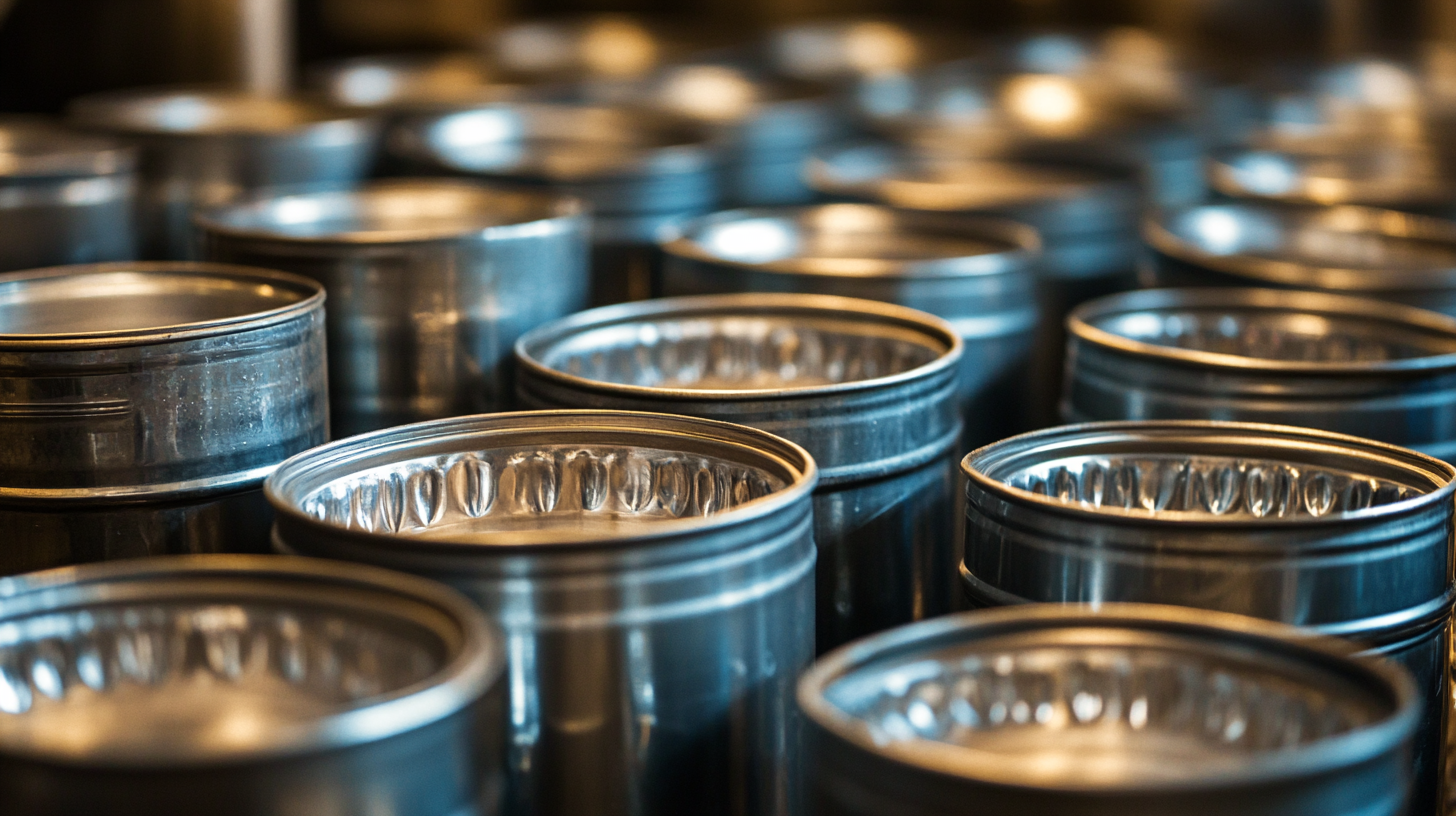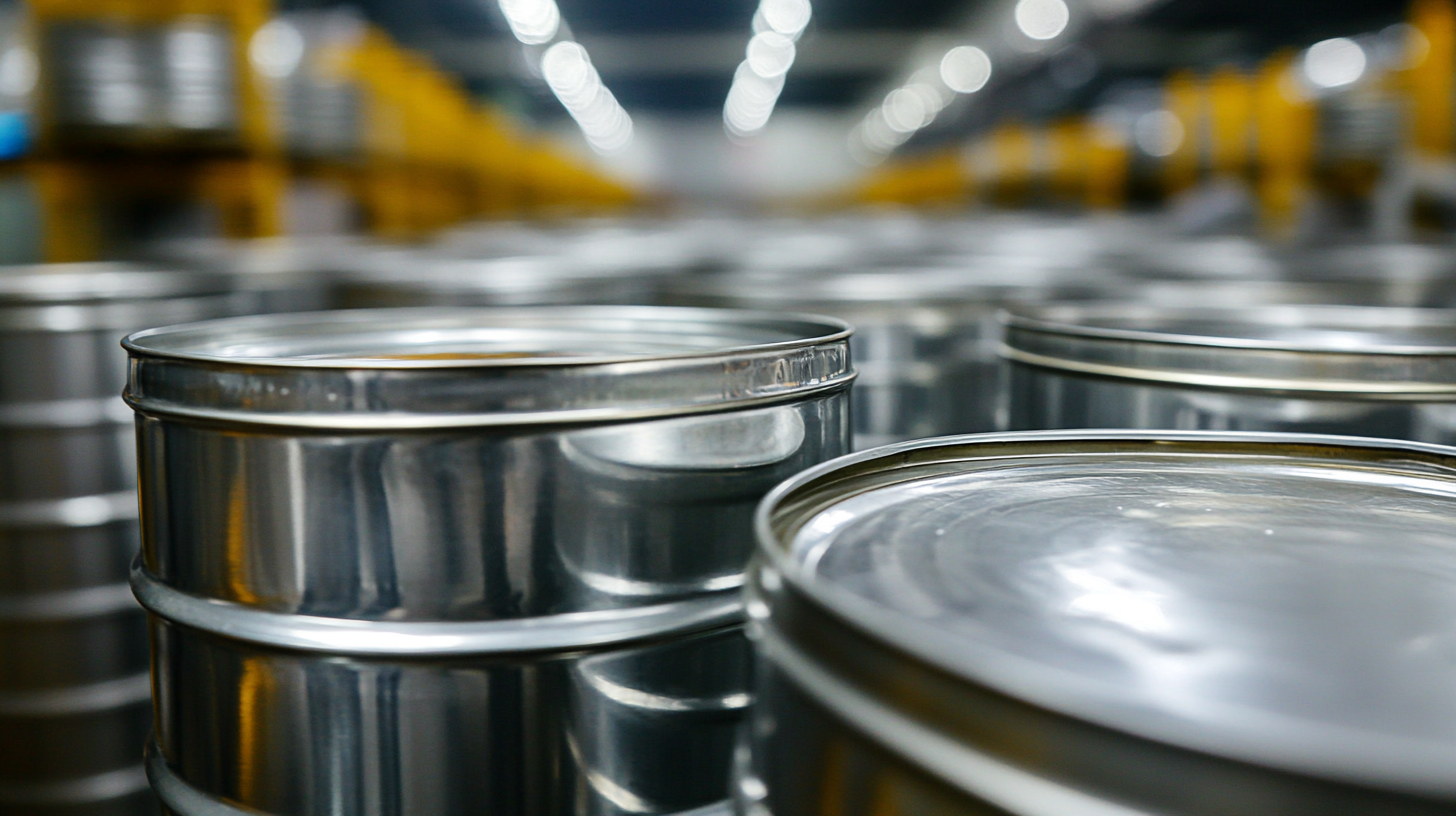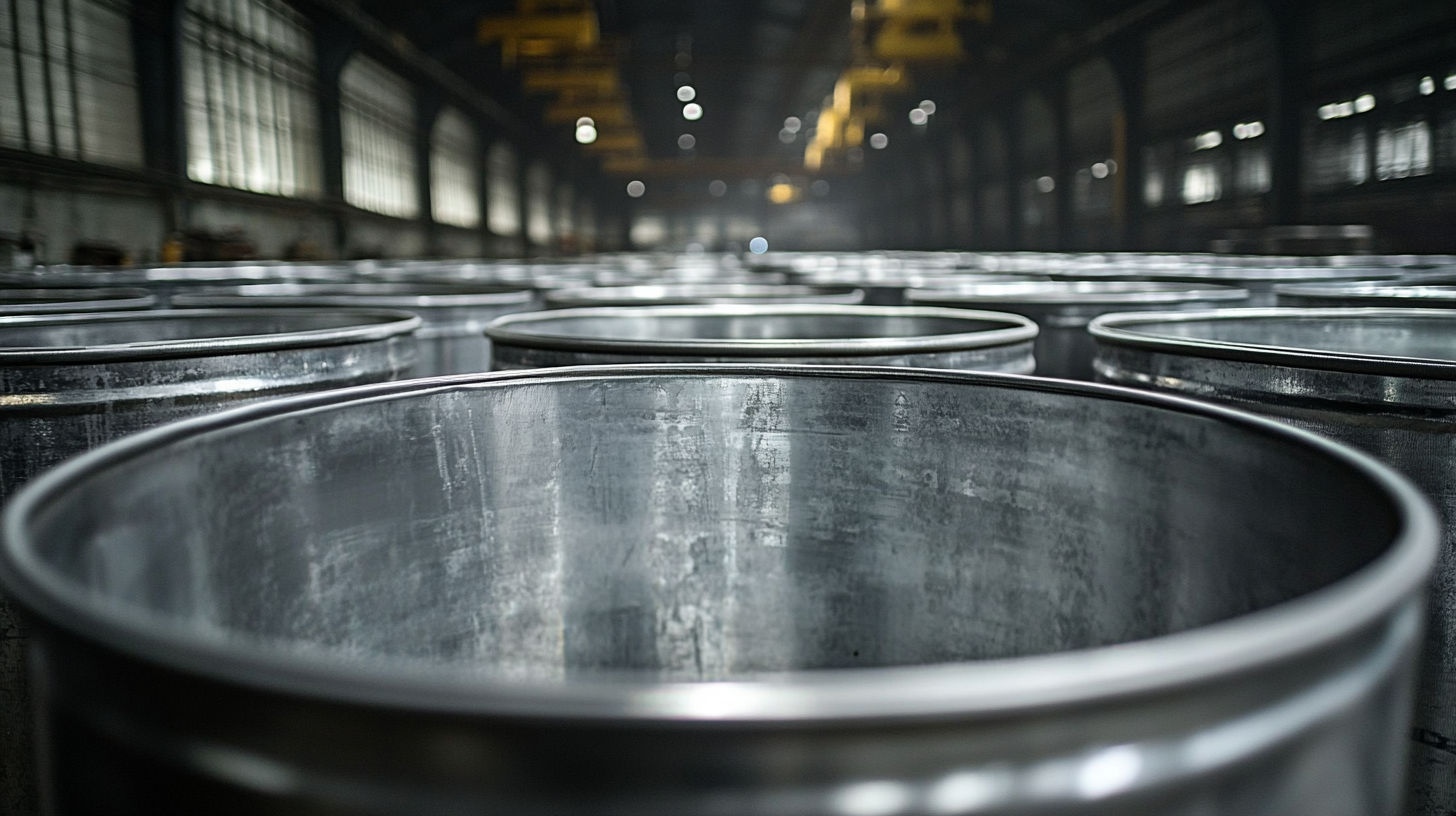 +817089618688
+817089618688
Free Standard Samples can be provided for you to check the quality.
Leave Your Message
The global tin container industry is experiencing remarkable growth, even amidst the challenges posed by the ongoing tariff disputes between China and the United States. According to recent industry reports, the demand for tin containers is projected to reach a staggering market value of $18 billion by 2026, driven primarily by the increasing preference for sustainable packaging solutions. In 2022 alone, China's tin container production surged by over 15%, illustrating the resilience of Chinese manufacturers in leveraging both innovation and capacity to meet soaring global demands. As the market shifts toward eco-friendly packaging, China remains at the forefront, proving that even in the face of adversity, strategic adaptations can lead to significant opportunities. This blog will explore how the Chinese tin container industry not only navigates these tumultuous trade relations but also thrives, setting a benchmark for resilience in international markets.

China's tin container industry has demonstrated remarkable resilience despite the ongoing challenges posed by tariffs in the US-China trade relationship. According to a recent report from the International Tin Association, global tin consumption is projected to reach 360,000 tons by 2025, with the food and beverage packaging sector driving a significant portion of this growth. This rising demand for tin containers highlights the adaptability of China's manufacturers, who have innovated and optimized their production processes to maintain competitiveness in the face of external pressures.
Furthermore, a market analysis by Mordor Intelligence indicates that the Asia-Pacific tin packaging market is expected to grow at a compound annual growth rate (CAGR) of over 4% during the next five years. This trajectory showcases China's strategic investments in technology and sustainable practices that enhance product quality and reduce costs. By focusing on environmental sustainability, companies are not only attracting a growing segment of eco-conscious consumers worldwide but also positioning themselves to meet international standards, thus opening new avenues for export amidst tariff challenges.
The ongoing US-China trade tensions have created a significant ripple effect across various industries, including the tin container market. As the US imposed increased tariffs—raising the rate on imported goods from China to a staggering 125%—the dynamics of global trade have fundamentally shifted. Despite these challenges, the global demand for tin containers continues to surge, demonstrating resilience amid tariff-induced pressures. The need for sustainable packaging solutions has propelled the tin container industry to thrive, even as the cost implications of tariffs loom large.
Moreover, the aluminum market has also felt the impact of these tariffs, with additional levies leading to increased prices and evolving supply chain dynamics. The Midwest Premium surged by 17%, reflecting market anxieties as businesses adjust to the changing landscape. What remains clear is that while tariffs aim to protect domestic industries, they also force companies to reevaluate sourcing and production strategies. As sectors respond to these unprecedented measures, the long-term effects of the US-China trade war will likely continue to shape the global market for tin and other materials.
| Country | Tin Container Production (Units) | Global Market Share (%) | Growth Rate (2020-2023) | Key Export Regions |
|---|---|---|---|---|
| China | 1,200,000 | 45% | 10% | North America, Europe |
| USA | 800,000 | 30% | 5% | Domestic, Canada |
| Germany | 400,000 | 12% | 4% | Europe, Asia |
| Japan | 280,000 | 8% | 3% | Asia, North America |
| Others | 320,000 | 5% | 2% | Global |
The global tin container industry is witnessing a remarkable transformation, particularly for Chinese manufacturers who are seizing emerging opportunities despite challenges posed by US-China tariffs. As global demand for environmentally friendly packaging solutions surges, the versatility of tin containers in sectors such as food and beverage, cosmetics, and pharmaceuticals is becoming increasingly evident. Chinese manufacturers are not only adapting to market trends but are also innovating their production processes, enhancing quality, and optimizing supply chains to meet the rising needs of international customers.
In addition to advanced manufacturing techniques, the increasing consumer awareness of sustainability plays a pivotal role in propelling the sector forward. Tin containers are often perceived as a more sustainable alternative compared to plastic packaging, allowing manufacturers to tap into eco-conscious markets. As countries push for greener practices, Chinese companies are aligning their strategies with these global sustainability goals, opening doors to new collaborations and export opportunities. This adaptability positions the Chinese tin container industry favorably within a dynamic global marketplace, reinforcing its significance in the evolving landscape of packaging solutions.
This pie chart illustrates the market share distribution of the global tin container industry across different regions for the year 2023. Asia leads the market with 40%, followed by North America with 25%. This highlights the significant demand for tin containers, especially in emerging markets.
China's tin container industry has shown remarkable resilience and ingenuity in response to the challenges posed by US-China tariffs. To maintain its competitive edge, manufacturers have implemented several strategic initiatives aimed at boosting exports. One of the primary strategies has been diversification of markets. By tapping into emerging economies in Southeast Asia, Africa, and Latin America, Chinese producers are not only mitigating the impacts of tariffs but also aligning their offerings with increasing global demand for sustainable packaging solutions.
Moreover, investment in technology and innovation has played a crucial role in enhancing production efficiency. Many companies have adopted advanced manufacturing processes, including automation and smart manufacturing techniques, which not only lower costs but also improve product quality. These innovations enable the industry to produce a wider range of products, catering to specific customer needs, which further strengthens its position in the global market. By prioritizing sustainability through eco-friendly materials and practices, Chinese manufacturers are successfully appealing to environmentally conscious consumers worldwide, thus expanding their export potential even amidst fluctuating trade conditions.

As the global demand for tin containers continues to rise, particularly in the food and beverage sector, China's tin container manufacturers are positioning themselves to capitalize on this trend. According to the latest market research reports, the global tin container market is projected to grow at a compound annual growth rate (CAGR) of approximately 4.5% from 2023 to 2030. This surge is driven by increasing consumer preferences for sustainable packaging solutions and the expansion of e-commerce, creating a favorable environment for Chinese manufacturers despite the ongoing tariff challenges imposed by the United States.
In 2022, China accounted for over 40% of the world's tin container production, highlighting its significant role in meeting international demand. The rising popularity of tinplate packaging, known for its recyclability and durability, has led to a projected market value increase, expected to reach around USD 13 billion by 2028. Furthermore, the growth of the food and beverage industry, particularly in regions like Asia-Pacific and North America, has spurred innovation among Chinese manufacturers, fostering the development of advanced production techniques that enhance efficiency and reduce costs. This adaptability positions China's tin container industry not only as a central player in the global market but also as a leader in sustainable packaging solutions.

